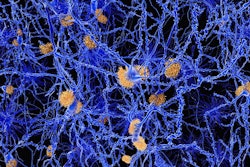Sunday, December 1 | 10:45 a.m.-10:55 a.m. | SSA16-01 | Room S505AB
A deep-learning system can yield promising results for identifying and annotating bone metastases on PET/CT image data, according to this talk by researchers from Japan."The proposed AI system may alleviate the burden of generating annotations and prevent oversights by radiologists when detecting bone metastases," presenter Dr. Saori Koshino, of the University of Tokyo, told AuntMinnie.com.
The group developed an AI "pipeline" in which an automated annotation tool first extracts lesions from PET data. Next, a binary bone "mask" is obtained from the CT data. After this mask is multiplied by the rescaled PET volume, a convolutional neural network (CNN) then discards regions with high FDG uptake outside of the bones. At that point, each bone metastasis candidate is then converted into a slice-wise bounding box, according to the researchers.
To develop the final algorithm, a radiologist labeled the extracted lesions as osteoblastic metastasis, osteolytic metastasis, intertrabecular metastasis, or other. Next, a Mask R-CNN was trained to detect and annotate the bone metastases using the labeled boxes as the ground truth.
The researchers then assessed the algorithm's predictive accuracy on a validation set of PET/CT cases. How well did it perform? Visit this scientific session on Sunday morning to find out.





















